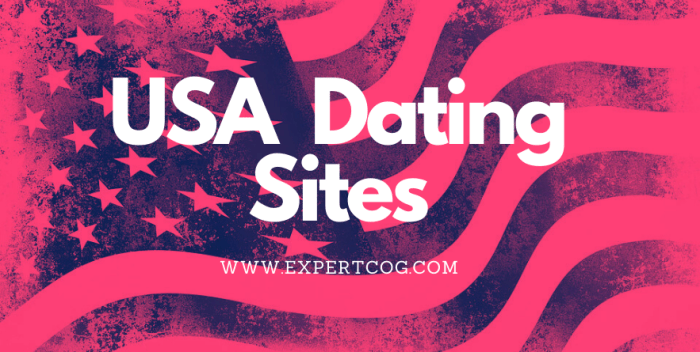Navigating the world of online dating can feel like traversing a vast, uncharted territory. With countless platforms vying for attention, choosing the right one can be overwhelming. This comprehensive review delves into the landscape of US dating platforms, examining their features, user experiences, and market trends to help you make an informed decision. We'll explore the strengths and weaknesses of popular apps, analyze user reviews to uncover common themes, and predict future directions in this ever-evolving industry.
From analyzing pricing models and user demographics to comparing safety features and user interface designs, we aim to provide a clear and insightful overview. We’ll also consider the impact of social media, emerging trends like niche dating apps, and how platforms are adapting to changing user expectations. This detailed analysis will equip you with the knowledge to confidently choose a platform that best suits your needs and increases your chances of finding a meaningful connection.
Top US Dating Platforms
Navigating the world of online dating can be overwhelming, with numerous platforms vying for your attention. This comparative overview examines several popular US dating platforms, focusing on their pricing, user base, features, and safety measures to help you make an informed decision. Understanding these key aspects will empower you to choose the platform best suited to your needs and preferences.US Dating Platform Comparison
The following table compares five popular US dating platforms across key features. Note that pricing models can change, so always verify directly with the platform.| Platform | Pricing Model | User Demographics | Key Features |
|---|---|---|---|
| Tinder | Freemium (subscription for enhanced features) | Broad age range, diverse demographics | Swipe-based matching, extensive user base, location-based features |
| Match | Subscription-based | Generally older users seeking serious relationships | Detailed profiles, advanced search filters, messaging features |
| Bumble | Freemium (subscription for enhanced features) | Growing user base, emphasis on women initiating contact | Women-first messaging, BFF and Bizz modes |
| OkCupid | Freemium (subscription for enhanced features) | Diverse user base, known for detailed questionnaires | In-depth compatibility matching, extensive profile customization |
| Hinge | Freemium (subscription for enhanced features) | Users seeking meaningful relationships | Prompts encourage deeper profile development, focus on quality over quantity |
Unique Selling Propositions of Leading Platforms
Each platform distinguishes itself through specific features. Tinder's success stems from its ease of use and massive user base, creating a high chance of finding matches. Match focuses on serious relationships, attracting users seeking long-term commitment through detailed profiles and advanced search tools. Bumble's unique selling proposition is its women-first approach, empowering women to control the initial contact and fostering a more respectful environment.User Interface Comparison: Tinder and Bumble
Tinder and Bumble both utilize a swipe-based interface, but their designs differ slightly. Tinder presents a more straightforward experience, prioritizing quick swiping and immediate matching. Bumble's interface integrates its women-first messaging feature more prominently, impacting navigation flow. While both are intuitive, Bumble's additional features might feel slightly less streamlined for users accustomed to Tinder's simplicity. The overall user experience is positive on both platforms, but caters to slightly different preferences.Safety Features of Select Dating Platforms
Protecting user safety is paramount. Tinder offers photo verification to reduce catfishing and provides resources on dating safety. Match employs robust reporting mechanisms and actively monitors profiles for suspicious activity. Bumble's "Private Detector" feature alerts users to potentially inappropriate messages, contributing to a safer environment. These platforms each take different approaches to safety, but the common goal is user protection.User Experiences and Reviews

Source: expertcog.com
Categorization of User Reviews
User reviews across various platforms, including app stores and online forums, reveal recurring themes. These themes can be broadly categorized to facilitate a more comprehensive analysis. The following categories represent common areas of user feedback:- Ease of Use and Navigation: Reviews frequently mention the intuitiveness of the platform's interface, the efficiency of the search functions, and the overall ease of navigating the platform's features.
- Success Rates and Matching Algorithms: Users often share their experiences with the platform's matching algorithms, detailing the quality of matches they received and their overall success in finding compatible partners.
- Safety and Security Concerns: A significant portion of user feedback addresses safety and security, including experiences with fake profiles, harassment, or scams.
- Customer Support and Responsiveness: Users assess the quality and responsiveness of customer support services, evaluating the effectiveness of their assistance in resolving issues or answering questions.
- Value for Money and Subscription Models: Reviews often discuss the pricing models of different platforms, evaluating whether the cost justifies the services provided and the overall user experience.
Recurring Positive and Negative Aspects of User Experiences
Positive user experiences frequently center around successful matches, user-friendly interfaces, and responsive customer support. For example, many users praise Tinder for its ease of use and wide user base, leading to a higher likelihood of finding compatible matches. Conversely, negative experiences often revolve around issues with fake profiles, ineffective matching algorithms, and poor customer service. Some users have reported frustration with Bumble's emphasis on women initiating contact, citing a lack of responses or engagement from potential matchesCommunication Strategies Employed by Dating Platforms
Effective communication strategies involve promptly addressing user concerns, providing clear and concise explanations, and offering practical solutions. Platforms that excel in this area often utilize in-app messaging systems to directly address user issues, providing timely updates and resolving problems efficiently. Ineffective communication strategies often involve delayed responses, generic replies, or a lack of follow-up, leaving users feeling ignored and frustrated. For instance, Hinge's proactive approach to addressing reported fake profiles through account verification and robust reporting mechanisms demonstrates effective communication, whereas a platform's failure to respond to user complaints about inappropriate behavior can significantly damage its reputation and user trust.Hypothetical User Persona and Experience
Consider Sarah, a 30-year-old professional in New York City, seeking a long-term relationship. Based on existing reviews, her experience on a dating platform might unfold as follows: She initially finds the platform easy to navigate and enjoys the streamlined profile creation process. However, she encounters several inactive profiles and experiences some instances of unwanted or inappropriate messages. While the matching algorithm initially suggests some potentially compatible individuals, many profiles lack sufficient detail, making it difficult to assess compatibility. She contacts customer support regarding a particularly aggressive user, receiving a prompt response and having the offending profile removed. Despite some initial challenges, she eventually connects with someone she enjoys communicating with and begins to build a relationship. This scenario illustrates the mixed experiences users can have, highlighting both the positive and negative aspects based on real-world user reviews.Market Trends and Future Predictions

Source: datingadvice.com